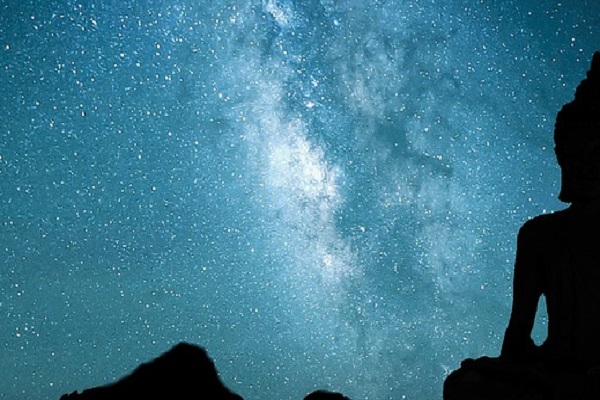
Buddhist Themes in ‘Star Wars: The Last Jedi’
- By Nathan Glover --
- 22 Dec 2017 --

Dualism, destiny and karma are all shown
The latest episode of the Star Wars franchise, Star Wars Episode VIII: The Last Jedi has polarized audiences. Many love it, and some do not like it at all. A few have even nominated it as one of the best Star Wars movies in the cannon. If this is indeed so, the credit should be given to the film director Rian Johnson. He is the only one other than George Lucas to both write and direct a Star Wars film. Gone are the days of nervous Disney executives pushing J.J. Abrams to make a commercially salable film. The Last Jedi displays the touch of an excellent filmmaker.
Star Wars The Last Jedi Buddhist Themes[/tweetthis]
Star Wars Episode VIII blends the Force’s reawakening of Force with a momentous loss.[/tweetit] The actor playing Leia Organa, from Episode IV, Carrie Fisher, unexpectedly passed away after she did all she was told to do in the movie. Her real death is depicted in the movie itself, where she is sucked into outer space after her ships get blown up by the Empire, and she is shown to exist in a space sandwiched between death and life. Leia then uses the Force within her to move back into another rebel ship and survive. This is equivalent to the real world where Fisher lives on after death through her Leia Organa persona, immortal and loved.
In all the Star Wars episodes, Buddhist concepts stand out. In fact one phase, “balance of Force,” stands out. In Buddhism, there exists the concept of duality: good versus evil, and light versus dark, to name two examples. There was no balance in The Force as the dark side has become too strong, obscuring the light. The previous episodes have shown Luke Skywalker urging Anakin Skywalker to fulfill his destiny-and which he ultimately did. Episode VIII again brings up the balance. Luke asks Rey to breathe and tell him what she sees. Rey saw the birth and death cycle. It was not violence taking place where good and evil are fighting each other, but they are being complementary opposites. This represents the Buddhist conception of non-dualism. There is not one, nor two, but many.
The Buddhist concept of destiny and karma is also explored in the film. This was shown by Rey's dark experience in the dark where countless reproductions of her endlessly repeat her actions. The scene symbolizes how one action results in another and thus on. This action flow will ultimately return to the person who began it. Rey's actions define her, not her parents or her ancestors.
Star wars has more in common to buddhism than christianity
— mlkyway (@mlkyway6651) December 20, 2017


















